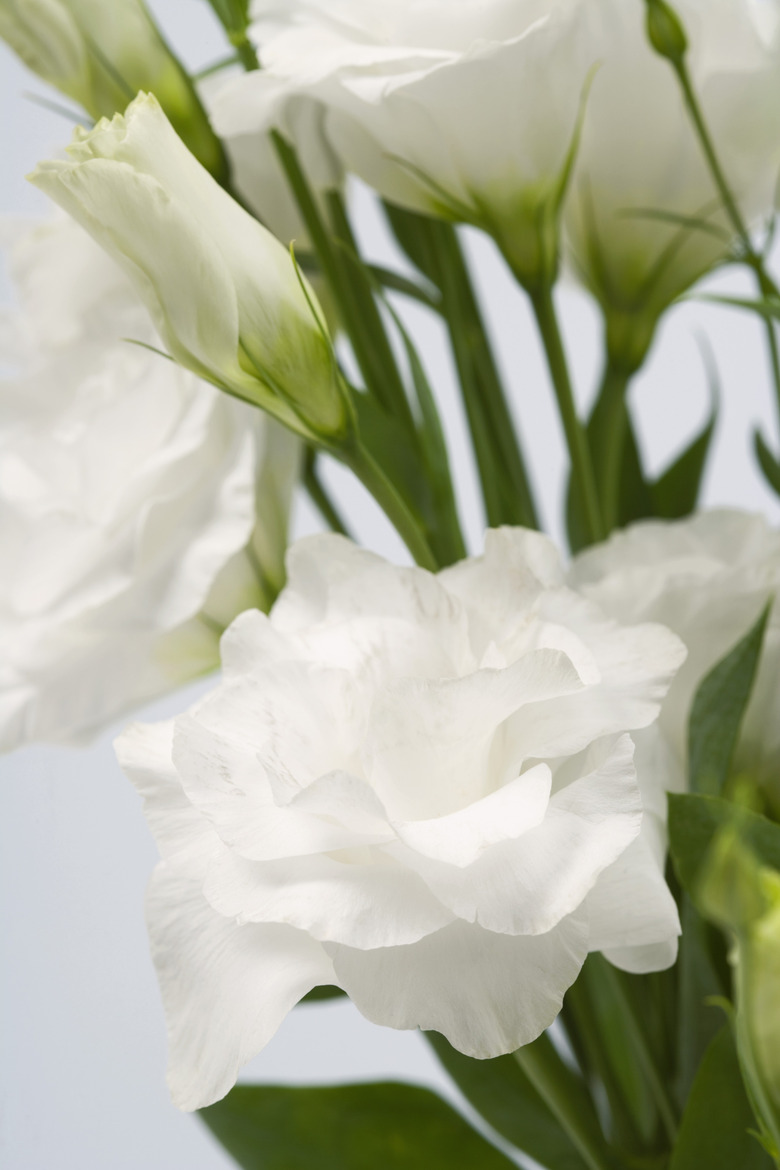Is Lisianthus Poisonous?
Lisianthus (Eustoma grandiflorum) is prized for its roselike blooms. Although it is a herbaceous perennial or biennial in U.S. Department of Agriculture plant hardiness zones 8 through 10, it frequently is grown as an annual. Lisianthus is not simple to cultivate, but its appearance makes it well worth the effort for many home gardeners. The plant is non-toxic to humans and animals.
Step 1
Even though lisianthus is not known to contain toxins harmful to people or animals, any plant poses the potential for harm if a piece of the plant becomes stuck in a person's or animal's throat, or if a person or animal has an allergic reaction to the plant. If you suspect that your child ingested part of a lisianthus plant, contact your doctor immediately for advice. Contact your veterinarian if you suspect your pet ate part of the plant. If either doctor requests an appointment, take a piece of the plant with you to help the doctor make a diagnosis and plan for treatment if necessary.
In Your Garden
Step 1
Standard-size varieties of lisianthus grow to a maximum height of about 3 feet and a maximum width of about 1 foot. Dwarf cultivars do well as container plants. Depending on the variety, lisianthus flowers are shades of cream, pink, blue and purple against true-green foliage.
Step 2
- Even though lisianthus is not known to contain toxins harmful to people or animals, any plant poses the potential for harm if a piece of the plant becomes stuck in a person's or animal's throat, or if a person or animal has an allergic reaction to the plant.
- If you suspect that your child ingested part of a lisianthus plant, contact your doctor immediately for advice.
In a Vase
Step 1
Lisianthus flowers are considered desirable in part for their long-lasting vase life. They make excellent cut flowers, according to the Missouri Botanical Garden website. The blooms can live up to two weeks after being cut. They are popular florist flowers and a favorite in cut-flower gardens.
Cultivation Tips
Step 1
The downside of lisianthus is that it is somewhat tricky to cultivate. It takes up to five months to grow from seed. Starting lisianthus plants from seeds indoors in a seed tray at least three months before the estimated last frost date is the best approach. If you start the seeds indoors in January, the seedlings should be ready to be planted outdoors in May. Choose a location exposed to full sun and with well-draining, neutral or alkaline soil. Lisianthus does not do well in rainy or otherwise wet conditions or in acidic soil.
Step 2
- Lisianthus flowers are considered desirable in part for their long-lasting vase life.
- If you start the seeds indoors in January, the seedlings should be ready to be planted outdoors in May.
- Choose a location exposed to full sun and with well-draining, neutral or alkaline soil.
